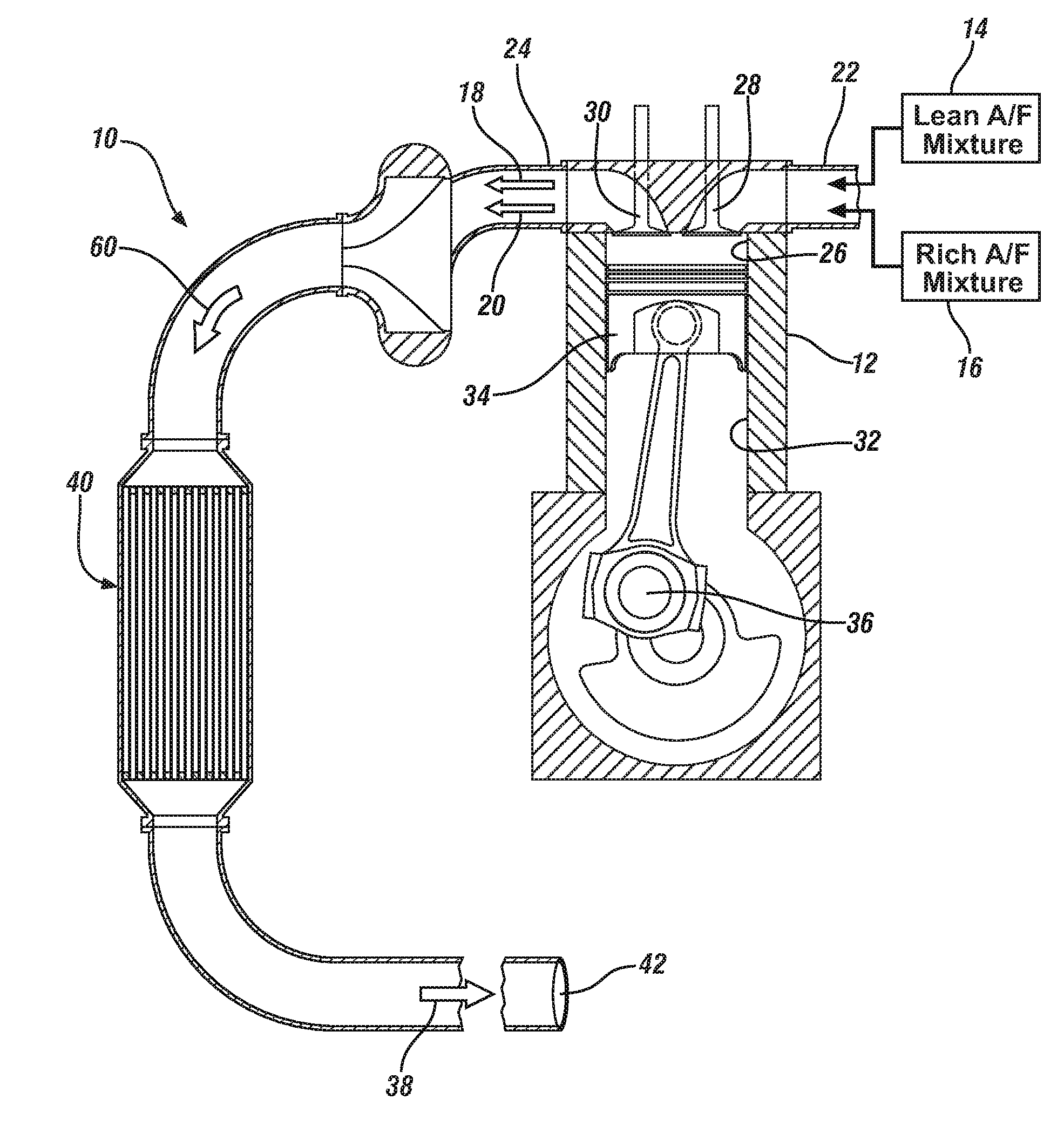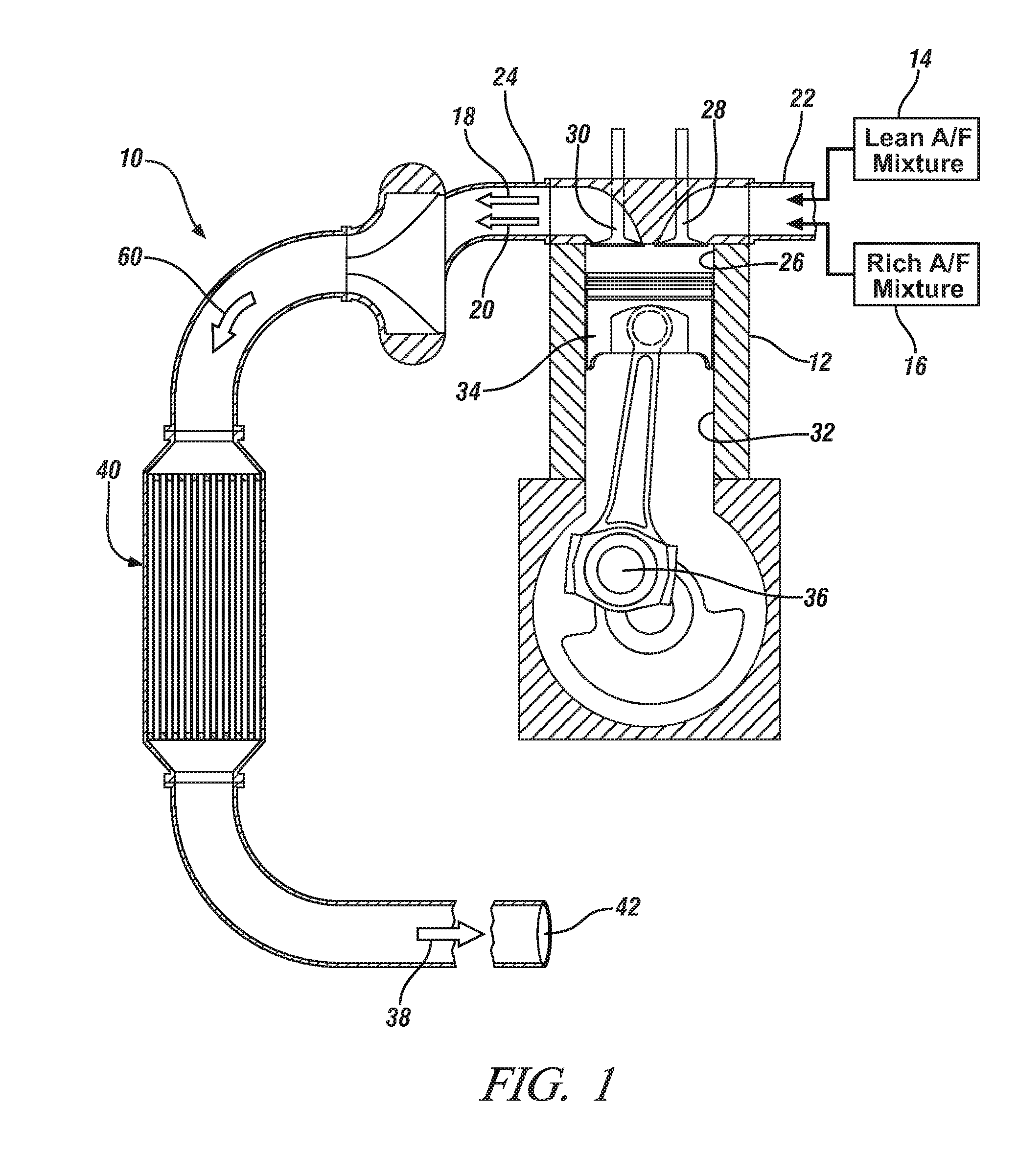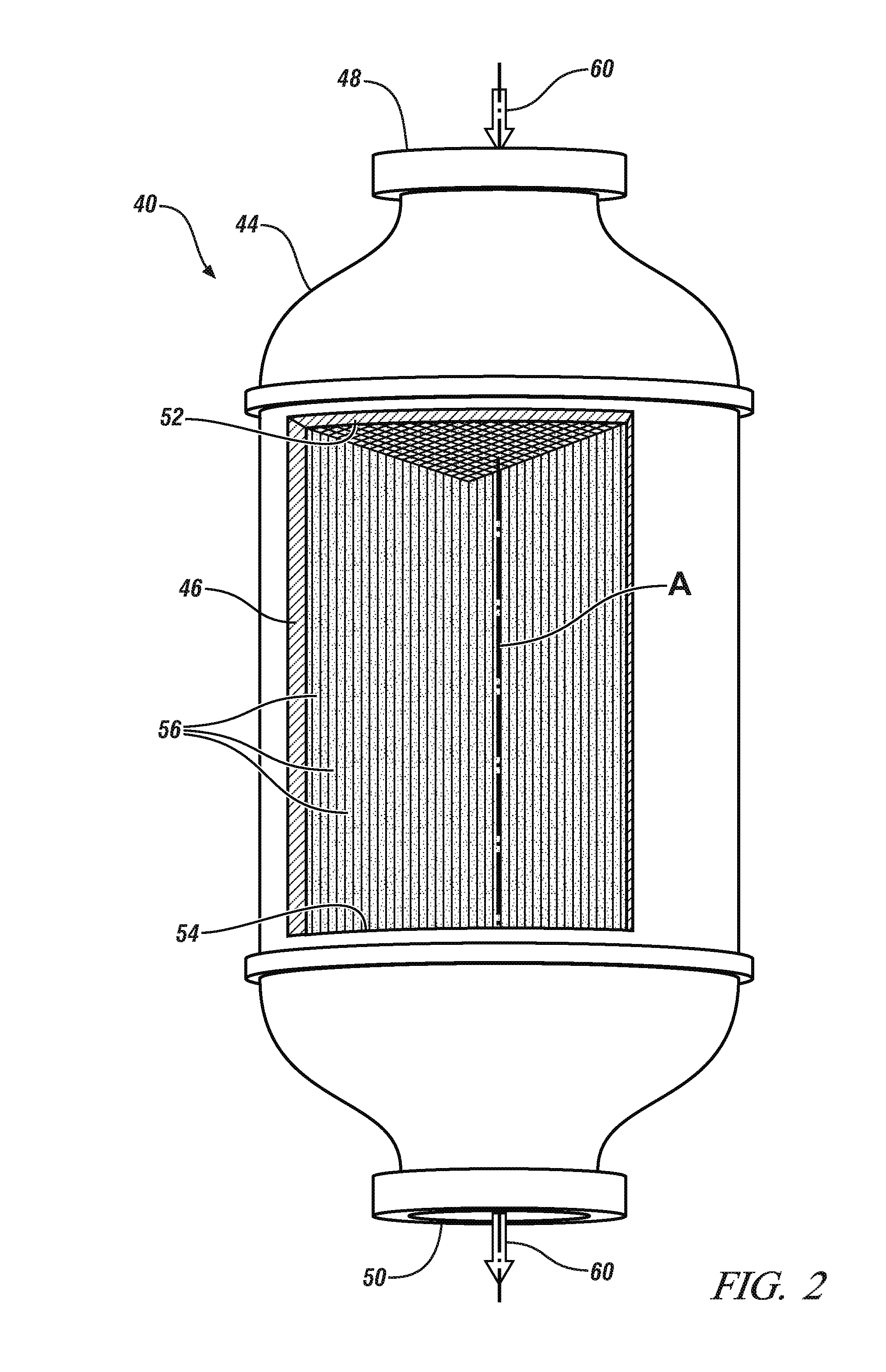MANGANESE-BASED OXIDES PROMOTED LEAN NOx TRAP (LNT) CATALYST
- Summary
- Abstract
- Description
- Claims
- Application Information
AI Technical Summary
Benefits of technology
Problems solved by technology
Method used
Image
Examples
experiment 1
[0073]Three manganese-based oxides (MnOx—CeO2, MnOx—ZrO2 and MnOx—Y2O3) were prepared as oxidation catalysts and used to promote NO oxidation in a synthetic oxygen and water containing gas stream. The NO oxidation activity of these manganese-based oxides was then compared to a commercial Pt-based catalyst with a Pt loading of 50 g / ft3 and a La0.9Sr0.1MnO3 catalyst.
[0074]These catalysts were tested in a quartz tubular reactor operated at atmospheric pressure by passing a simulated gas mixture through a volume of catalyst particles contained as washcoat layers on the walls of passages of a monolith. The simulated gas mixture was fed to the reactor using a series of mass flow controllers. The feed composition was 10% O2, 10% H2O, 10% CO2 and 200 ppm NO with N2 as balance. High purity commercial sources of these constituents were used. The total feed flow rate was 3.0 L / minute, corresponding to a space velocity of 25,000 h−1. In these and following experiments, the value of space veloci...
experiment 2
[0078]In a second group of experiments, the content of Mn in the manganese-based oxide catalysts was varied, and the resulting NO oxidation activities were recorded. The steady-state % NO conversion as a function of temperature was tested over five prepared MnxCe1-xO2 catalysts, where x=0, 0.1, 0.3, 0.5 and 1. The results showed that the higher the manganese concentration, the higher NO oxidation to NO2 activity, until the Mn / (Ce+Mn) atomic ratio reached 0.3. In sum, MnOx(0.3)-CeO2 showed the best NO oxidation activity among all of catalysts.
experiment 3
[0079]In a third group of experiments, NO oxidation activity of the MnOx(0.3)-CeO2 catalyst was evaluated in the presence of CO and HCs to simulate diesel engine exhaust. The feed composition to the reactor was changed to 10% O2, 200 ppm NO, 350 ppm C3H6, 150 ppm C3H8, 3000 ppm CO, 10% H2O with a balance of N2. The gases were fed using a series of mass flow controllers, and the total feed flow rate was 3.0 L / minute, corresponding to a space velocity of 25,000 h−1.
[0080]A maximum NO conversion of 22% at 300° C. was observed, which represents a decrease from the maximum conversion of 82% observed in the previous experiments. In sum, the presence of CO and HCs over the manganese-based oxide catalyst adversely affected the oxidation of NO, with NO2 formation inhibited or consumed by HCs over the MnOx(0.3)-CeO2 catalyst.
[0081]For comparison, commercial Pt and Pd catalysts were also tested under the same conditions. The Pd catalyst showed higher CO / C3H6 / C3H8 oxidation activity than the Pt...
PUM
| Property | Measurement | Unit |
|---|---|---|
| Density | aaaaa | aaaaa |
| Density | aaaaa | aaaaa |
| Volume | aaaaa | aaaaa |
Abstract
Description
Claims
Application Information
 Login to View More
Login to View More - R&D
- Intellectual Property
- Life Sciences
- Materials
- Tech Scout
- Unparalleled Data Quality
- Higher Quality Content
- 60% Fewer Hallucinations
Browse by: Latest US Patents, China's latest patents, Technical Efficacy Thesaurus, Application Domain, Technology Topic, Popular Technical Reports.
© 2025 PatSnap. All rights reserved.Legal|Privacy policy|Modern Slavery Act Transparency Statement|Sitemap|About US| Contact US: help@patsnap.com



